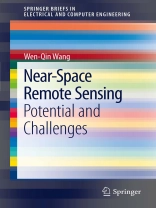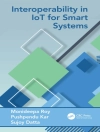Near-space is defined as the atmospheric region from about 20 kilometer (km) altitude to 100 km altitude above the Earth’s surface. It has received much attention in recent years and several types of near-space vehicles are currently being studied, developed, or employed. “Near-Space Remote Sensing: Potential and Challenges” concentrates mainly on the role of near-space vehicles in bridging the gap between satellites and airplanes for microwave remote sensing applications, providing a top-level system description and aiming to encourage further research. Further, this book also describes several potential applications such as passive surveillance, reconnaissance, and high resolution wide swath remote imaging.
The book is intended for geographers, transportation engineers and other researchers involved in remote sensing development and applications, in particular for near-space vehicles.
Wen-Qin Wang is an assistant professor at the School of Communication and Information Engineering, University of Electronic Science and Technology of China.
İçerik tablosu
Introduction.- Near-Space Vehicles:Remote Sensing Advantages.- Near-Space Vehicles in Passive Remote Sensing.- Near-Space Vehicles in Wide-Swath Remote Sensing.- Summary.
Yazar hakkında
Wen-Qin Wang was with the National Key Laboratory of Microwave Imaging Technology, Chinese Academy of Sciences, Beijing. Since Sept. 2007, he has been with the school of Communication and Information Engineering, University of Electronic Science and Technology of China. His research interests include Microwave Remote Sensing, signal processing, and novel radar imaging techniques. He has first-authored over 90 papers (over 10 papers are related to near-space remote sensing), one book and 4 chapters. Dr. Wang received the PI Innovation Winner from the Wiser Foundation of IDC in 2009 and Who’s Who in the World in 2010. He is the TPC Co-Chair of the international conference on computation-problem solving, Chengdu, China, 2011.












